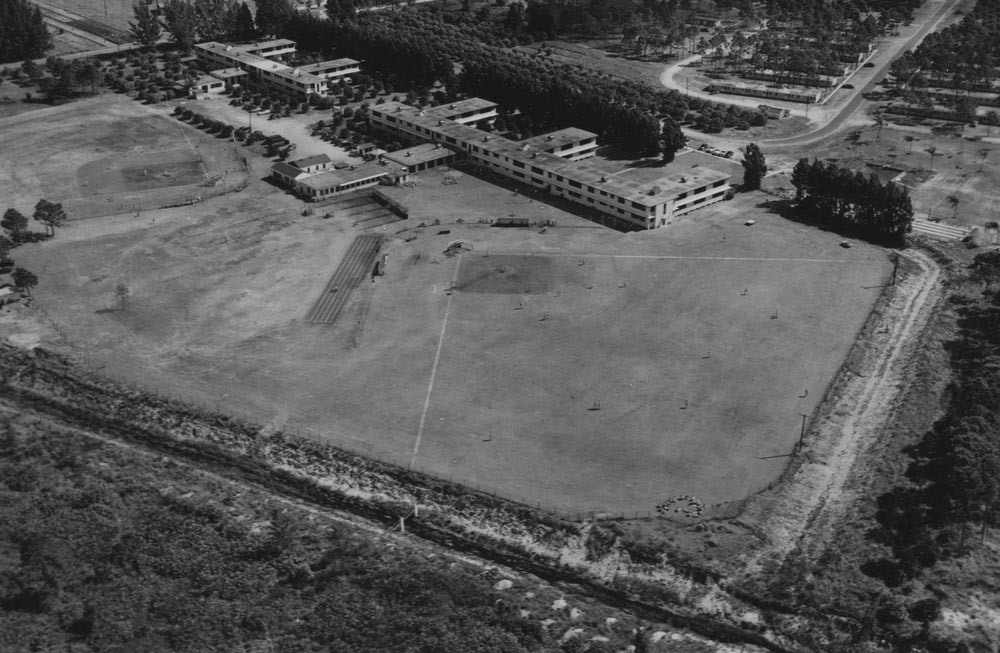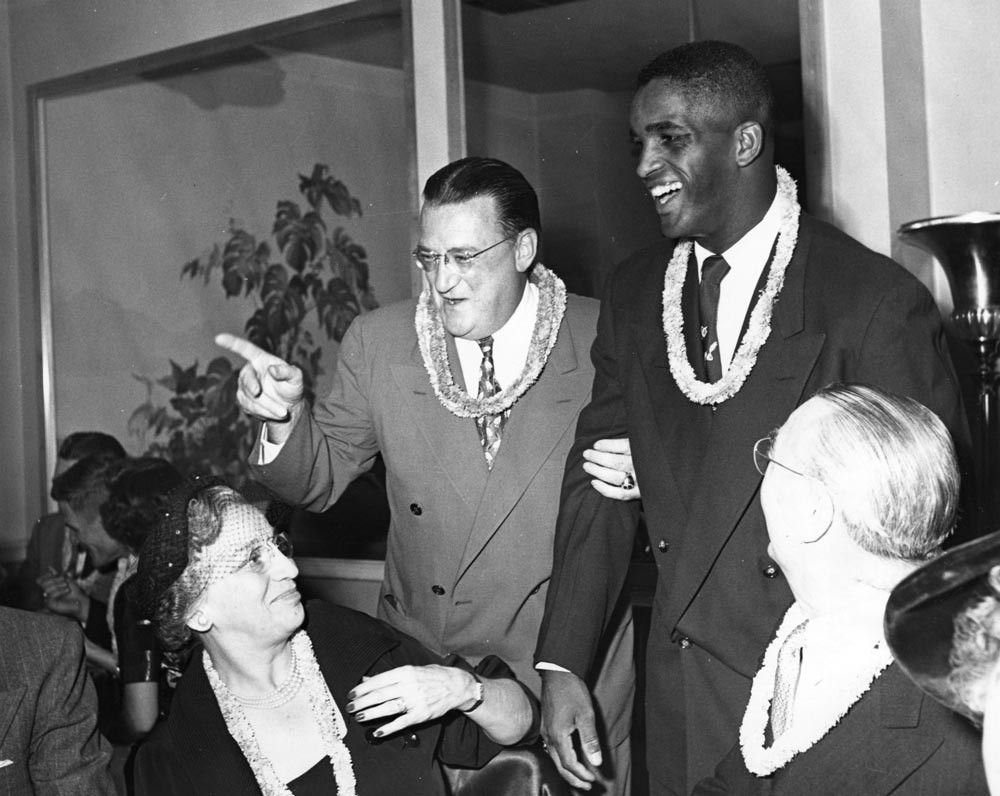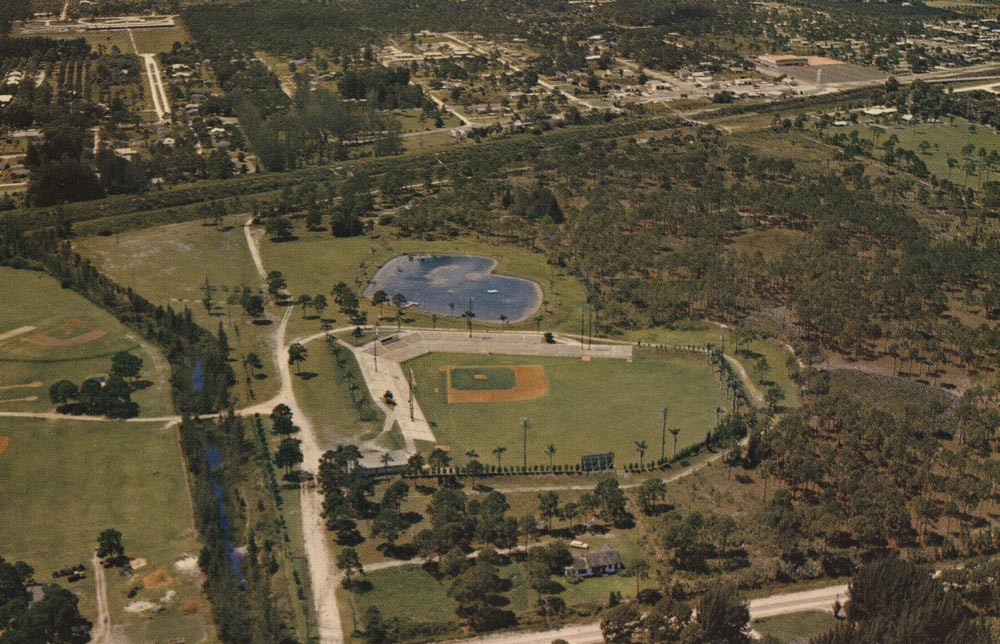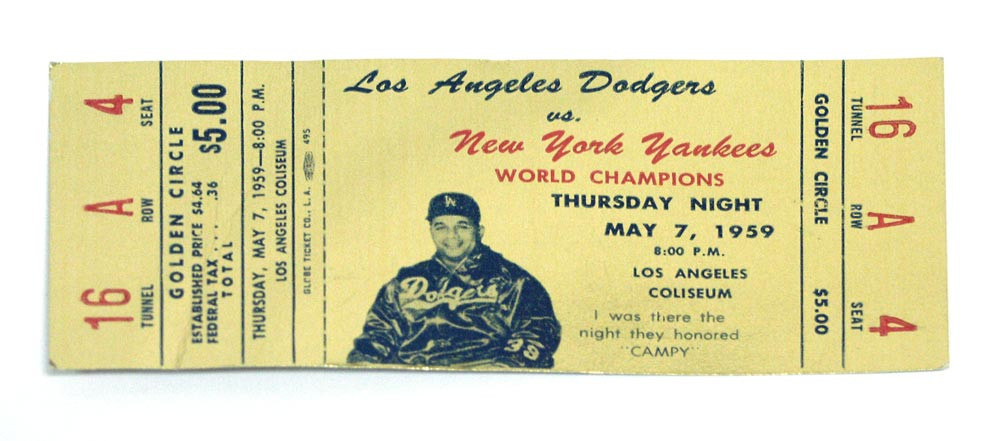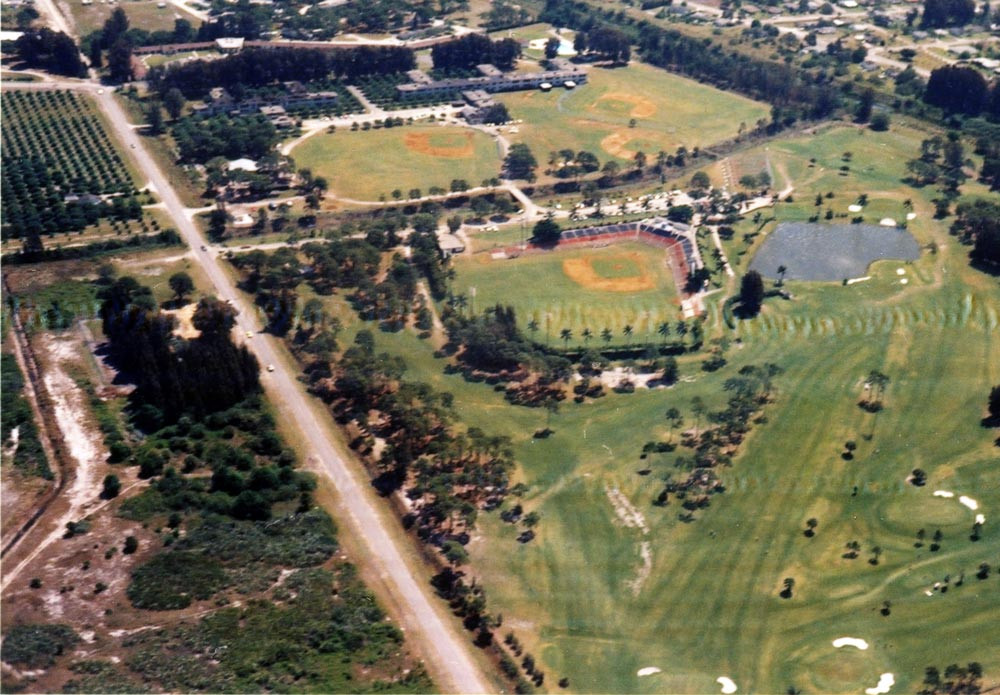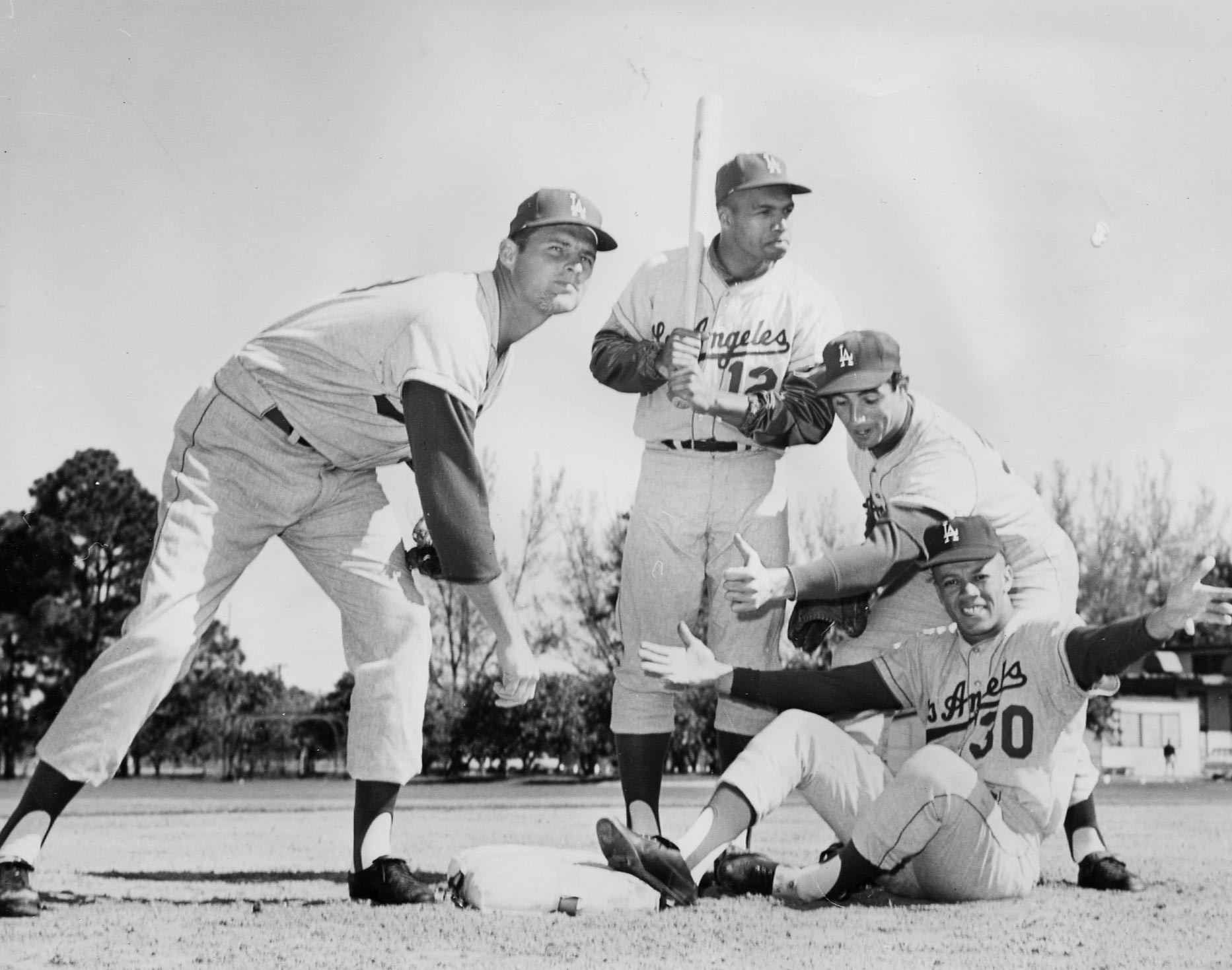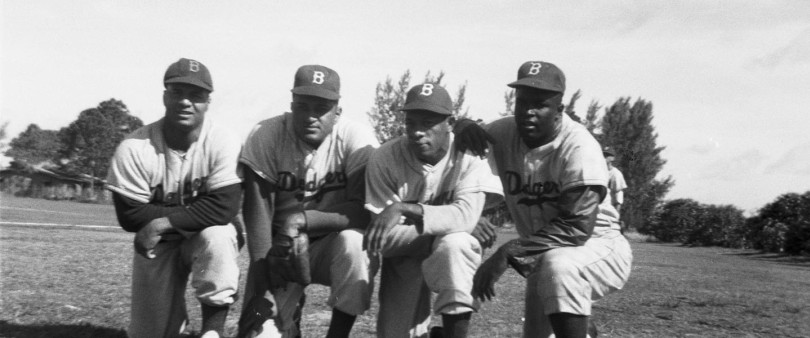
Feature
U.S. Civil Rights Trail Honors Historic Dodgertown
By Robert Schweppe
Historic Dodgertown, the former Spring Training base in Vero Beach, Florida, known for its history as the Spring Training base for the Brooklyn and Los Angeles Dodgers, has the honor of its recognition on the U.S. Civil Rights Trail. Historic Dodgertown was re-named the Jackie Robinson Training Complex in April, 2019 by Major League Baseball.
The U.S. Civil Rights Trail, whose motto is “What Happened Here Changed the World,” is a list of significant locations in the U.S. to the American Civil Rights Movement, a reinforcement of the rights all Americans share. Listing more than 100 locations in 15 states, they are events of American courage, resilience, and bravery that led to a more integrated, more just United States. They include the birthplace of Dr. Martin Luther King, Jr., the voter registration march in Selma, Alabama, the U.S. Supreme Court for its ruling on school desegregation, and the 1965 Voting Rights Act.
To best exhibit their purpose, the U.S. Civil Rights Trail sought public recommendations to add to their original list. In 2018, former Historic Dodgertown Communication and Marketing Director Ruth Ruiz is the one person who became aware of the concept and felt the Dodgers’ former Spring Training Complex was a natural fit to demonstrate its legacy.
Using available documentation, particularly a thorough essay by Lawrence University History Professor Jerald Podair titled, “Haven of Tolerance,” she submitted the necessary materials to the organization. The Civil Rights Trail easily made the decision to place Historic Dodgertown one of only five locations in the state of Florida, and more importantly, the only sports organization to be recognized for the tribute.
The problem of integration in spring training was succinctly stated by Hall of Fame Dodger catcher and three-time National League Most Valuable Player Roy Campanella in Jackie Robinson’s 1964 book, “Baseball Has Done It.” Robinson interviewed African-American baseball players and asked them of the challenges and struggles to play in the major leagues with segregation.
Campanella said, “We thought we were accomplishing a lot when we integrated baseball. We never thought it would be like this. I didn’t think this would go on for years and years and years. I thought this would gradually change. It did gradually change in baseball. We fellows thought we were accomplishing something. We didn’t think it would be like it is today. Mr. (Branch) Rickey said there’d be no segregation at Vero Beach. But if you leave out Dodgertown, we were segregated everywhere.” Meaning, for approximately 6-8 weeks every year in states without a Major League Baseball team, segregation laws were still infecting sports in the South.
Dodgertown, by the forward wisdom of their team leadership, wanted the best players to play their best as a team. Their plan was to have all players taking instruction and getting ready for the season and to be living and dining together as teammates in the same complex. No segregation was allowed to exist among players.
Starting in 1962, Dodgertown was a leader in the early integration of a public place in the South when any fan could choose their seating location and use any washroom or drinking fountain they wished in Holman Stadium. Dodger President Walter O’Malley provided useful recreational facilities, a movie theatre, and clothes washing accommodations for players. In the 1960s, he opened the first public golf course in Vero Beach and added a second golf course in the early 1970s, primarily to give all team players a way to relax off the diamond, since the local courses were not integrated.
The prominence of Historic Dodgertown as essential to American civil rights has been significantly documented through the years. Brad Pye, Jr, the sports editor and columnist of the Los Angeles Sentinel wrote in 1980, “The Dodgers’ Spring Training operation here at Dodgertown in Vero Beach has to be the utopia of major league Spring Training camp. It’s strictly major league in training facilities, lodging accommodations, press facilities, food and the works….Over the years this facility, which was purchased primarily to shelter Jackie (Robinson), Roy (Campanella), Don (Newcombe), Jim (Gilliam), and the other Black ballplayers from the pains of prejudice, segregation, and bigotry, has seen many changes….In retrospect, a move which was originally made so that Black ballplayers could eat, practice and live with their teammates without any racial strife, has benefitted all the players who train here. It has also made the Dodgers the envy of the other pro sports teams.”
Former Dodger pitcher and 1952 National League Rookie of the Year Joe Black wrote in his autobiography, “Ain’t Nobody Better Than You,” that “I mentally applauded the Dodgers for developing a facility where all of the players could be fed and domiciled without being embarrassed by the mores of Florida’s dual society.”
Hall of Fame catcher Campanella told Steve Calhoun of the Los Angeles Times on March 15, 1984, “I think Dodgertown played an important part in the integration of baseball. It made it so much easier for Jackie (Robinson), (Don) Newcombe, Dan Bankhead, and myself. We could stay with the team, we felt like a part of it. We could eat in the same mess hall with our teammates. We were able to live and eat together. We weren’t able to do that in other places.”
Former two-time National League batting champion Tommy Davis of the Los Angeles Dodgers stated in his book Dodger players led the way to the integration of Holman Stadium, where the Dodgers played their exhibition games. In his book, “Tommy Davis’ Tales From the Dodgers Dugout,” Davis wrote he, Willie Davis, Jim Gilliam, and John Roseboro, came to Peter O’Malley, the Dodgertown Director with their suggestion.
Davis was aware of the importance of integration on the Dodgertown base for the players and felt it was proper to integrate the Dodgertown ballpark. In 1962, Davis told Peter O’Malley, “Jackie Robinson integrated this thing in 1947 and we still have a problem at Holman Stadium, right now.” Davis wrote, “To his (Peter O’Malley) credit, the next day everything (segregated signs for seating and washrooms) was gone…We had to physically take the black people to seat them in other spots around the stadium. When we had an exhibition game we went and took the people out of the right field area and told them to sit in left field, sit behind home plate, sit over there. And they wouldn’t believe us.” ‘Oh no, we can’t do that,’ they said. So we just took them and told them to sit wherever they wanted to from now on. That was the integration of Holman Stadium.”
Dodgertown was noted for its integration by the U.S. Government. The National Parks Service of the U.S. Department of the Interior wrote a report in 2004 and then in a revised 2009 edition titled, “Civil Rights in America: Racial Desegregation of Public Accommodations” cited Major League Baseball as an aspect during 1954-1964 that improved American civil rights. The report stated, “In the decade after World War II, some of the most visible blows to racial segregation came on baseball diamonds. In the next paragraph, they cited, “Black ballplayers encountered more difficulties during spring training in the South...” The report mentioned the Dodgers’ efforts in Dodgertown to desegregate by remarking, “The Dodgers remained and built their own complex of playing fields and housing accommodations in Vero Beach, called Dodgertown.”
In November, 2014, during a Dodger Adult Baseball Camp where fans mixed with former Dodger players for a week of instruction and experience, Dodgertown had a permanent marker unveiled as a Florida Heritage Landmark. The marker read, “Dodgertown was the South’s first racially integrated spring training camp.” Ruth Stanbridge, a former Indian River County Commissioner and the Indian River County Historian told Mark Schumann of the Indian River Guardian what she wanted to convey in the message on the landmark. Stanbridge said, “I had wanted to write the perfect historic marker for Dodgertown. It was to reflect on how our WWII training fields had been turned into a ‘field of dreams’ for young men from all races who only wanted to play baseball.” Stanbridge told Jeanne Creagan of the Hometown News, I have written many of these texts (for landmark signs) but “Baseball and Dodgertown is probably the one most special to me.” The historic marker still rests on a walkway at the Jackie Robinson Training Complex.
The New York Times printed two articles that specified the place in American history by Dodgertown. Presidential scholar and historian Michael Beschloss wrote a newspaper article February 15, 2015 with the headline, “When Jim Crow Got Cut From Spring Training,” it was the impact of the location upon baseball integration. In April, 2015, David Waldstein, writing a feature of Historic Dodgertown, wrote, “They (the Dodgers) moved here to…escape the racist abuse and dehumanizing rules of segregation…”
Major League Baseball Commissioner Rob Manfred visited Historic Dodgertown for the Elite Development Invitational for the training of young players. He told the TC Palm July 28, 2016 that, “We are really supportive of the idea that Dodgertown should be maintained as part of baseball’s history…The combination of the history of Dodgertown and having some of the best players in the nation is just fantastic for us. I hope being in Dodgertown will give them a feel of the history and tradition of this great game.” And in 2019, Major League Baseball assumed the business operation of Historic Dodgertown and re-named it as the Jackie Robinson Training Complex to the acclaim of everyone. At the time of the announcement of Historic Dodgertown being placed on the U.S. Civil Rights Trail in February, 2019, columnist Lawrence Reisman wrote in the TC Palm, “In 1948, the Brooklyn Dodgers’ Spring Training facility, now known as Historic Dodgertown, had the first integrated housing, dining room, and recreation for all players at a time when blacks were excluded from many amenities in parts of Vero Beach and the Treasure Coast…Over the years, Dodger owners built two golf facilities for their players and were among the first businesses to remove segregated seating, water fountains, and bathrooms.”
In April, 2021, the Italian women’s national softball team conducted workouts at the Jackie Robinson Training Complex in Vero Beach, Florida, the former Spring Training home of the Dodgers. To honor the name of Jackie Robinson while they practiced at the complex, the team wore the number 42 of Jackie Robinson on the backs of their uniform tops. FIBS (Italian Baseball and Softball Federation) has begun a project titled, “Progetto 42” (Project 42) where elementary, middle, and high school students learn of the remarkable story of Jackie Robinson and his on-field and off-field contributions to the integration of American sports and society.
During a workout by the team at the Jackie Robinson Training Complex, Peter O’Malley happened to be at the complex on the same day as the Italian women’s softball team. He spoke to the team and told them of the areas and diamonds where Robinson played when it was the Dodgers’ Spring Training base. O’Malley spoke of his lasting friendship with Jackie and his wife Rachel and his recognition of their accomplishments in baseball and American society.
The U.S. Civil Rights Trail in their section of Historic Dodgertown on their website wrote, “Throughout Florida, civil rights victories were achieved at a gradual pace. But in Vero Beach, the Dodgers led the way to lasting change and lasting hope.” They reviewed the actions taken by Dodger ownership to push back against segregation through the years, establishing standards eventually followed by other teams and sports. They concluded their introduction, “These progressive actions that began with a baseball went beyond Dodgertown and Vero Beach, influencing social change worldwide.”
“What Happened Here Changed the World”
1945-1946
The Brooklyn Dodgers sign seven of the first nine African-American players to professional baseball contracts. They include Jackie Robinson, Roy Campanella, and Don Newcombe. In his autobiography, “Off The Record,” former Dodger Vice President Buzzie Bavasi wrote, “Walter (O’Malley) had as much to do with Jackie’s (Robinson) reaching the big leagues as did Branch Rickey.”
April 15, 1947
Jackie Robinson becomes the first Black player in Major League Baseball’s modern era as he debuts for the Dodgers as first baseman on April 15 in a game against the Boston Braves at Ebbets Field, Brooklyn. Dodger President and General Manager Branch Rickey signed Robinson initially to a contract on October 23, 1945 and assigned the former UCLA four-sport star to play for the Montreal Royals in 1946.
In his book, “The American Diamond,” Dodger President Branch Rickey wrote, “The ownership of Brooklyn at the first meeting in New York approved Negro employment. That was a new day for ownership in professional baseball and (the board of directors of the Brooklyn Baseball Club) were heartily in favor.” In 1947, Dodger ownership consisted of Rickey, Walter O’Malley, John L. Smith and Dearie McKeever Mulvey. It would take more than a decade for all Major League clubs to have an African-American player in a big league game.
August 26, 1947
Dan Bankhead makes his Major League debut with the Dodgers to become the first African-American pitcher in the Major Leagues. Bankhead homered in his first Major League plate appearance.
September 30, 1947
Jackie Robinson becomes the first African-American player to make a World Series appearance. On October 5 in the same World Series, teammate Dan Bankhead is a pinch-runner as the first African-American pitcher in a World Series game.
Robinson wins the first-ever Rookie of the Year Award in 1947 (for both leagues) after batting .297 with a National League-leading 29 stolen bases, an award that would later be named for him. He is inducted in the National Baseball Hall of Fame in 1962 as the first African-American player.
1948
Dodgertown, Vero Beach, Florida becomes the first and only integrated Major League Baseball Spring Training site in the South.
The Brooklyn Dodgers concluded their Spring Training at Dodgertown, Vero Beach, Florida with two exhibition games. The Dodgers and their Montreal Royals’ minor league club both have African-American players who will be staying in the same living quarters and eating in the same dining room as all other players and personnel. Until the early 1960s, Dodgertown will be the only integrated Spring Training base in Major League Baseball in the South.
March 31, 1948
The Brooklyn Dodgers play the Montreal Royals in an exhibition game at a field near the Vero Beach Airport. It is the first time in Spring Training in the South that a Major League team has African-American players. Jackie Robinson hits a home run in the first inning leading off for the Dodgers as they defeat Montreal, 5-4. Roy Campanella’s contract that day is purchased by the Dodgers, making him the third African-American player for the team, the others being Robinson and Dan Bankhead.
April 20, 1948
Roy Campanella becomes the first African-American catcher to play in Major League Baseball. He later became a three-time National League MVP and was inducted into the National Baseball Hall of Fame in 1969.
October 5, 1949
Pitcher Don Newcombe becomes the first African-American to start a World Series game in Game 1 of the 1949 World Series against the New York Yankees.
October 30, 1950
Walter O’Malley is quoted in a column written by “The Old Scout” and states, “Prejudices have no place in our society and certainly not in sports.”
October 1, 1952
Joe Black’s performance in Spring Training at Dodgertown earned him a spot on the 1952 Dodger Major League roster. He becomes the first African-American pitcher to win a World Series game as a starting pitcher, 4-2 over the New York Yankees in Game 1 at Ebbets Field. Black would be named the 1952 National League Rookie of the Year for his pitching.
1954
Dodger President Walter O’Malley privately builds a makeshift pitch-and- putt nine hole course by the heart-shaped lake on the Dodgertown base to provide recreation to all players. The golf courses in the city were private and not integrated.
July 17, 1954
For the first time in Major League Baseball history, the majority of the Dodgers’ lineup are minorities with Jackie Robinson (3B), Jim Gilliam (2B), Sandy Amoros (LF), Roy Campanella (C) and Don Newcombe (P) starting the game against Milwaukee, won by the Dodgers at County Stadium, 2-1. All five players were originally signed by the Dodgers, and earned their spot on the Major League roster because of their Spring Training play that season at Dodgertown.
December 22, 1954
The Brooklyn Dodgers will not play an exhibition game in Birmingham, Alabama. The Sporting News contains a news item that “The Brooklyn (Dodgers) club has adhered to its policy of playing no games where any or all of its players cannot participate.”
February 8, 1955
Jackie Robinson, interviewed in Look magazine said Walter O’Malley told him “The club (Dodgers) wouldn’t hesitate to put nine Negroes on the field if they were the best nine available players.”
May 7, 1959
A then record Major League Baseball crowd of 93,103 fills the Los Angeles Memorial Coliseum for an exhibition game with the New York Yankees to recognize Roy Campanella who retired from playing baseball because of injuries suffered in a single car accident. All the net proceeds of the Dodgers’ share are provided to the care of Campanella. Campanella would become a regular fixture in the Dodgers’ Spring Training at Dodgertown on invitations from Walter and Peter O’Malley to instruct a new generation of catchers that included John Roseboro, Steve Yeager, Mike Scioscia and Mike Piazza. At Historic Dodgertown, “Campy’s Bullpen,” his favorite place to unwind and tell stories after a day of Spring Training workouts as a player, is still featured by a sign in its original spot.
October 6, 1959
The Los Angeles Dodgers defeat the Chicago White Sox in six games to win the 1959 World Championship. It is the first time in Major League Baseball history a team has four African-American players on the field for the final out of the last game. On the field in the ninth inning are third baseman Jim Gilliam, second baseman Charlie Neal, shortstop Maury Wills, and catcher John Roseboro. All four players were originally signed by the Dodgers and developed in their minor league system, including Spring Trainings at Dodgertown.
November 1, 1959
Mallie Robinson, mother of Jackie Robinson, writes to Norris Poulson, the Mayor of Los Angeles that “Mr. (Walter) O’Malley, as owner of the Dodgers, gave my son, Jackie, a chance to break the color line in baseball.”
August 8, 1961
Dodger President Walter O’Malley wrote a letter to Frank Scott and Robert Cannon of the Major League Players’ Association regarding their inquiries of segregation in the South in Spring Training. O’Malley responded, “There are local city (of Vero Beach) ordinances that are not in keeping with our thinking, which, however, cover situations off our self-contained base. Our relations with the local political administration are not cordial at the moment and we have been giving some thought to transferring our base to the West Coast unless we see signs of improvement.”
1961
Dodger Vice President Buzzie Bavasi stated in Jet Magazine on segregated seating in Spring Training stadiums, “When we (the Dodgers) sell tickets (for Spring Training exhibition games), the law requires separate sections. We have to comply with the law.”
1962
Dodgertown Director Peter O’Malley completely removes the concept of segregated seating, water fountains and bathrooms in Holman Stadium at Dodgertown, despite the prohibition of laws in the South. Columnist Larry Reisman in the TC Palm newspaper wrote March 4, 2010, “The O’Malley family who owned the team who were so instrumental in ending the color barrier in Major League Baseball, helped set an example by integrating the stadium (Holman Stadium in Dodgertown). Schools were finally integrated in 1969.”
April 11, 1962
Columnist Melvin Durslag writes in The Sporting News, “Where seating in the baseball stadium (Holman Stadium) has always been segregated, Walter O’Malley removed the signs this year, inviting Negroes to sit anywhere in the park. Perhaps 99 per cent continue to occupy the old Jim Crow seats, but slowly, more are expected to make the shift. In town, O’Malley’s popularity hasn’t thickened.”
March 31, 1965
Jackie Robinson returns to Dodgertown and again makes sports history by being the first African-American to do sports commentary on national television. ABC-TV signed Robinson to provide background on telecasts with announcer Chris Schenkel and the pair combined to do a simulated telecast in an exhibition game at Holman Stadium featuring the Dodgers and the St. Louis Cardinals.
April 4, 1965
At Dodgertown before the start of the regular season, Maury Wills is named “Captain” of the Los Angeles Dodgers to become the team’s first African-American captain. With the distinction, Wills becomes the second African-American team captain in Major League Baseball history after Willie Mays of the San Francisco Giants.
1965
The Los Angeles Dodgers are the first team in Major League Baseball history to have two minorities on the Major League coaching staff with African-American player Jim Gilliam and Preston Gomez from Cuba. Gilliam and Gomez are on the coaching lines at Holman Stadium in Dodgertown to begin their tenure.
1965
A true nine-hole golf course on Dodgertown property is open to the public, the first public golf course in Vero Beach, Florida. African-American Dodger players were not invited to play at the golf courses in the town because they were private and not integrated. Walter O’Malley wanted all his players to have the opportunity to relax after daily workouts by playing golf on the public course he privately built just beyond Holman Stadium at Dodgertown.
April 23, 1974
National Baseball Hall of Fame sportswriter honoree Sam Lacy wrote in the Baltimore Afro-American on segregation issues in Spring Training in the South, “Something had to be done to eliminate these problems (hotel management refusing to provide rooms for blacks) and bring about the all-for-one residency at the same time….Given the assurance that the Dodgers would assume complete responsibility for policing the area, the Vero Beach government promised to keep hands off until called in by the ball club. In that way, (Dodger President and General Manager Branch) Rickey and his associates were able to skirt the local ordinance requiring Jim Crow housing. It was, without a doubt, the first crack in the wall of prejudice that continued to plague baseball for the next 15 years.”
1977
In his book, “Baseball’s Great Experiment”, author Jules Tygiel wrote, “To allow black players to avoid Vero Beach’s Jim Crow system, team officials at Dodgertown showed movies, built a nine-hole golf course for the players and had an airstrip that could provide transportation in and out of the facility.”
August 16, 1979
The Los Angeles Sentinel newspaper wrote on the passing of Walter O’Malley, “O’Malley was a family man who dominated the game of baseball for thirty-five years and, along with Branch Rickey, gave black players their first real crack at the major league. O’Malley will long be remembered by players of color for his very unique style of courage and for his warm humanity….He went to bat for black players when it was unpopular and he improved the game of baseball by his daring actions.”
September, 1980
Dodger Hall of Fame catcher Roy Campanella is asked in a question and answer session with Sepia Magazine,
SEPIA: “You brought up the name of Walter O’Malley earlier. Was he as much involved with the integration of major league baseball as Branch Rickey?
Campanella answered: “Definitely. When we went to Spring Training in 1948, Mr. O’Malley started Dodgertown, which was formerly the Vero Beach Naval Air Station. He had it set up so that we could eat together and we could sleep together, but we couldn’t play golf with our teammates after practice. He (O’Malley) took care of that developing a nine-hole golf course and we also ended up having an 18-hole golf course if we wanted to play.”
February 21, 1988
Tom Moczydlowski of the Vero Beach Press Journal wrote of the integration of Holman Stadium for Dodger exhibition games as narrated by Ralph Lundy, a free-lance writer who wrote for the Negro News Section of the Jacksonville Journal and a member of a biracial committee in Indian River County. “Lundy went to the (1962) meeting (with Dodgertown Director Peter O’Malley) with Rev. Dr. Arnold Wettstein of the Community Church, the president of the biracial committee. They didn’t have to talk long to O’Malley before their ideas were approved to end segregation at Holman Stadium. He was very receptive and understood the problem. He knew what we were asking.” Moczydlowski continued, “Within two days, the ‘colored’ and ‘white’ signs that hung above water coolers and restrooms were removed. The black section of the stadium—the bleachers between third base and outfield – became like another other (sic) seats and the blacks were allowed to sit anywhere they chose.”
February 23, 1998
The Vero Beach Press Journal had an article written by James Kirley on the integration of Holman Stadium. “Peter O’Malley who had just been appointed director of Dodgertown (in 1962) remembered signs over Holman Stadium restrooms stating they were for use by blacks.” O’Malley said, “We all agreed that had to go immediately…….I said, ‘That’s crazy! They can sit wherever they want!’”
2005
Former Dodger outfielder Tommy Davis writes in a book, “Tales From the Dodger Dugout,” how he came to sign a minor league contract with the Dodgers in 1956 when he was a heavily sought after free agent because of a phone call from Jackie Robinson. “When he (Robinson) called, he said, ‘This is Jackie Robinson. I’d like to talk to you about the advantages of signing with the Dodgers, what to look forward to. They treat me good and under the circumstances, they’re going to look after you.’” Tommy Davis was a two-time National League batting champion in 1962 and 1963 and was a member of the Dodger World Championship teams in 1963 and 1965.
March 9, 2008
Columnist Richard Griffin wrote, “The reality of the Dodgers’ move, removing themselves from reliance on any local Florida community in order to run their own mini-city (mayor and all) for the spring is far more compelling than convenience. It is linked to conflict and the unfolding history of American civil rights…and wrongs. The history of Dodgertown parallels and reflect (Jackie) Robinson and (Branch) Rickey’s pioneer work in the great, social experiment of integration.”
March 17, 2008
Historian Timothy Gay wrote in The Boston Globe, “(Dodgertown) revolutionized the social structure of baseball, and in a lesser degree, the nation.”
February 24, 2009
Charles Fountain wrote for the website “Boston.com” and had this to say of Dodgertown, “And history was made here. And not just baseball history. Branch Rickey brought spring training to this abandoned naval air station in 1948 because the old barracks would be under the control of the Brooklyn Dodgers, and thus free of the local segregation ordinances that blocked the mingling of the races in hotels and restaurants throughout Florida until the 1960s. At Dodgertown, the Dodgers could be a team on and off the field. How much of the integrated team’s considerable on-field success during the 1950s may have been born of that? ‘It brought the team together, there’s no question about that,’ said (Peter) O’Malley of the Dodgertown intimacy, ‘and at the most important time of the year.’”
March 13, 2009
Author Charles Fountain was interviewed by News@Northwestern, a Boston university website and said of Dodgertown, “That meant all the Dodger players, black and white (could be housed). Florida was segregated at the time and the Dodgers were the only team that lived together as a team, until the segregation customs and ordinances were struck down in the early 1960s. That makes Dodgertown and Vero Beach historic for reasons that have nothing to do with baseball.”
April, 2010
Jeff Idelson, President of the National Baseball Hall of Fame wrote in “Memories and Dreams” the monthly magazine of the Hall of Fame, “We need to thank Dodgers’ owner Walter O’Malley for his open-mindedness (in signing Jackie Robinson). When you are next in Cooperstown, stop by his and Branch Rickey’s plaques and remember their brilliance in signing (Jackie) Robinson.”
November 10, 2014
In dedication ceremonies, Historic Dodgertown is named a “Florida Heritage Landmark” and a Florida Historical Marker is established by the conference center. The marker displays the history of Dodgertown as a Spring Training site in Florida and the language on the sign states “Dodgertown was the South’s first racially integrated spring training camp.”
February 15, 2015
Historian Michael Beschloss wrote in the New York Times, “The (Dodgertown) camp, with its own barracks and dining halls, would liberate the team from Jim Crow…..But Dodgertown itself could not solve the larger problem of racial segregation in the Grapefruit League. More than a decade after (Jackie) Robinson joined the Dodgers, black players for other teams were still shunned by many Florida hotels and restaurants.”
February 19, 2015
American History Professor at Lawrence (Wisconsin) University, Jerald Podair, Ph.D writes an essay titled “Haven of Tolerance” for the importance of Dodgertown and the integration of Major League Baseball in Spring Training. “But Dodgertown was more than just an incubator of talent. Its significance extends beyond the playing field into the social and racial history of Florida, the South, and America as a whole. By offering an integrated and egalitarian workplace, one in which players were judged not by who they were but what they did, Dodgertown was unique not just among Southern Spring Training facilities, but among Southern institutions generally.”
2015
In the book “The Black Press and Black Baseball, 1915-1955, author Brian Carroll with Ratuken Kobo, researched the Baltimore Afro-American newspaper that quoted one Dodger player saying of Dodgertown, “The only segregation in Dodgertown existed by ability, not color.”
2016
Author Michael Leahy wrote in his book, “The Last Innocents” of the Los Angeles Dodger teams in the decade of the 1960s, “It had become part of the franchise’s lore that the Dodgers had done more to advance the cause of racial opportunity than any other team in professional sports. In addition to (Jackie) Robinson, (Roy) Campanella, and (Don) Newcombe, the Dodgers’ prominent African American signings had included pitcher Joe Black, infielders Jim Gilliam and Charlie Neal, outfielder Sandy Amoros, and catcher John Roseboro. Some major-league clubs in the 1950s still had yet to sign their first black player.”
2016
Continuing in the book, “The Last Innocents,” author Michael Leahy wrote, “Led by an indignant Tommy Davis, a group that included (John) Roseboro, (Jim) Gilliam, (Maury) Wills, and (Willie) Davis, went to Peter O’Malley (Director of Dodgertown and son of Dodger President Walter O’Malley) and demanded an end to segregation in the Vero Beach ballpark (Holman Stadium) which had largely limited blacks to sitting in the right-field corner and in a small area by the left-field foul pole. The shame of the segregated bathrooms, segregated drinking fountains, and separate entrances into the ballpark compounded the wrong, the players added. Holman Stadium was part of Dodgertown and Dodgertown was not the South, they told the younger O’Malley…..Well into the next century, Peter O’Malley would remember the moment. ‘Tommy (Davis) pointed out things we were negligent on,’” he recalls. “He was eloquent. And I knew he was right.”
2016
Author Michael Leahy in “The Last Innocents,” “What (Tommy) Davis didn’t know at that moment was the extent to which the young O’Malley had already plunged himself into desegregating the ballpark…..By the time (Tommy) Davis finished speaking to him, (Peter) O’Malley had pledged full support. When the team arrived at the ballpark for the next game, a couple of days later, (Tommy) Davis discovered that segregated bathrooms had been integrated. A Dodger employee, operating on orders from the junior O’Malley, had painted over the word Colored everywhere he could find it in the stadium…….(Tommy) Davis thought in that moment that the victory was complete. What he (Davis) didn’t know was that the O’Malley family had acted unilaterally, without the approval of Vero Beach officials. The strict segregation ordinance of the town remained on the books, if Vero Beach wished to enforce it.”
2016
Author Michael Leahy in “The Last Innocents,” wrote “At any time, Vero Beach officials could have charged the Dodgers with being in violation of its segregation ordinance. They didn’t. Making no fuss, the officials quietly rolled over. By then, the Dodgers’ enormous economic impact on the city had made the team’s presence critical to Vero Beach’s welfare. The ordinance died in time from disuse.” The Dodgers’ black players had realized a victory uncommon to that point in the civil rights movement.”
January 19, 2019
The U.S. Civil Rights Trail honors Historic Dodgertown to be a selection as part of their dedication to providing information of the history of American civil rights. The U.S. Civil Rights Trail slogan is “What happened here changed the world,” and highlights remarkable places in the United States where significant realization of civil rights were made. Historic Dodgertown is the first fully integrated Spring Training team headquarters in the South for Major League Baseball and actions by the Dodgers there led the way for all professional sports.


